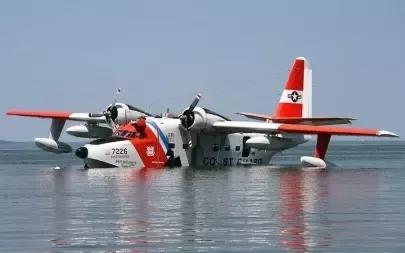How his amphibious airplanes could bring flight to inaccessible places
PORTLAND, Maine—Daniel Peabody-Harrington’s goal is to build a new line of amphibious planes that can provide air transportation for populations that are growing rapidly around the world.
The commercial plane under development by his startup,Mallard Enterprises, could land on a body of water or a traditional runway—offering the versatility that is needed for regions that lack the land or funds to build or expand airports.
“It costs $1.5 billion to $3 billion to build a regional airport,” says Peabody-Harrington, who is serving a co-op withTechstarswhile pursuing a master’s degree in project management at theRoux Institutein Portland, Maine. “Our goal is to bypass the lack of airport infrastructure. Our aircraft will be able to land directly on water, and also land at the busiest airports.
“That allows operators to connect to areas they didn’t previously have access to due to lack of runways,” he says. “Think of Southeast Asia, India, Africa—even some areas of the Middle East and South America—where there is huge population growth. One of our case studies in India shows that the use of amphibious aircraft would increase the amount of useful runways from 500 to 500,000.”
He believes the planes would enable affordable access for air travel, transportation of cargo, and air ambulances. Mallard Enterprise’s aircraft would be more aerodynamically efficient and able to travel longer routes thanfloatplanesthat are currently on the market, he says.
read more“A fixed-wing aircraft operates at about one-fourth of the cost of the helicopter, and they’re usually about one-third of the price,” Peabody-Harrington says. “It’s more economically efficient to use this fixed-wing aircraft to land on a river bed or the ocean.”

It’s an ambitious goal to break into the notoriously complex aviation industry. But Peabody-Harrington has been taught to dream big as part of the initial class of graduate students at the Roux Institute, where through his co-op he has been working alongside 10 startup companies enrolled in the inauguralRoux Institute Techstars Accelerator.
After his 2018 graduation in international business logistics from the Maine Maritime Academy, Peabody-Harrington took on a retail business services job managing the supply chain for nine grocery distribution centers on the East Coast. His long-term goal was to pursue an entrepreneurial career while staying in Maine. That’s why he was intrigued by the launching of the Roux Institute in January 2020. He was the first student on campus and part of the inaugural class of graduate students.
During his co-op as a Techstars senior program and operations associate, he helped facilitate the first annual Demo Day, where the 10 startups pitched their services to more than 100 potential investors.
“Being a Techstars associate is described as getting an MBA in startups, and I’ve found it to be true,” says Peabody-Harrington, director of programs and operations at Mallard Enterprises, which was launched in July 2020. “The experience and knowledge I’ve gained has put me years ahead of where I was.”
Mallard Enterprises is in its early stages with plans to begin seeking funding. For the past six months, Peabody-Harrington has been focused on learning from Techstars, rather than on selling his own project.
“Dan is the kind of person that watches, listens, and absorbs before saying anything,” saysSantiago Zindel, program manager at the Roux Institute Techstars Accelerator. “He took this opportunity with Techstars partly to learn more about growing a business so that he could apply the knowledge to Mallard Enterprises. I think it’s a smart move; he got a lot of value from a Techstars Accelerator program without having to give up any equity in his company.”
Peabody-Harrington is looking forward to a second co-op withThe Michael J. and Ann Sherman Center for Engineering Entrepreneurship Educationat Northeastern, where he’ll be focused entirely on the aviation venture that he is pursuing with a program manager, an aviation designer, and an aircraft salesperson.
“It will give me the gift of time where I’ll be able to fully commit to working on this venture,” says Peabody-Harrington, who will be graduating in August. “I can’t tell you how excited I am to have the opportunity to do that.”
For media inquiries, please contact media@northeastern.edu.








